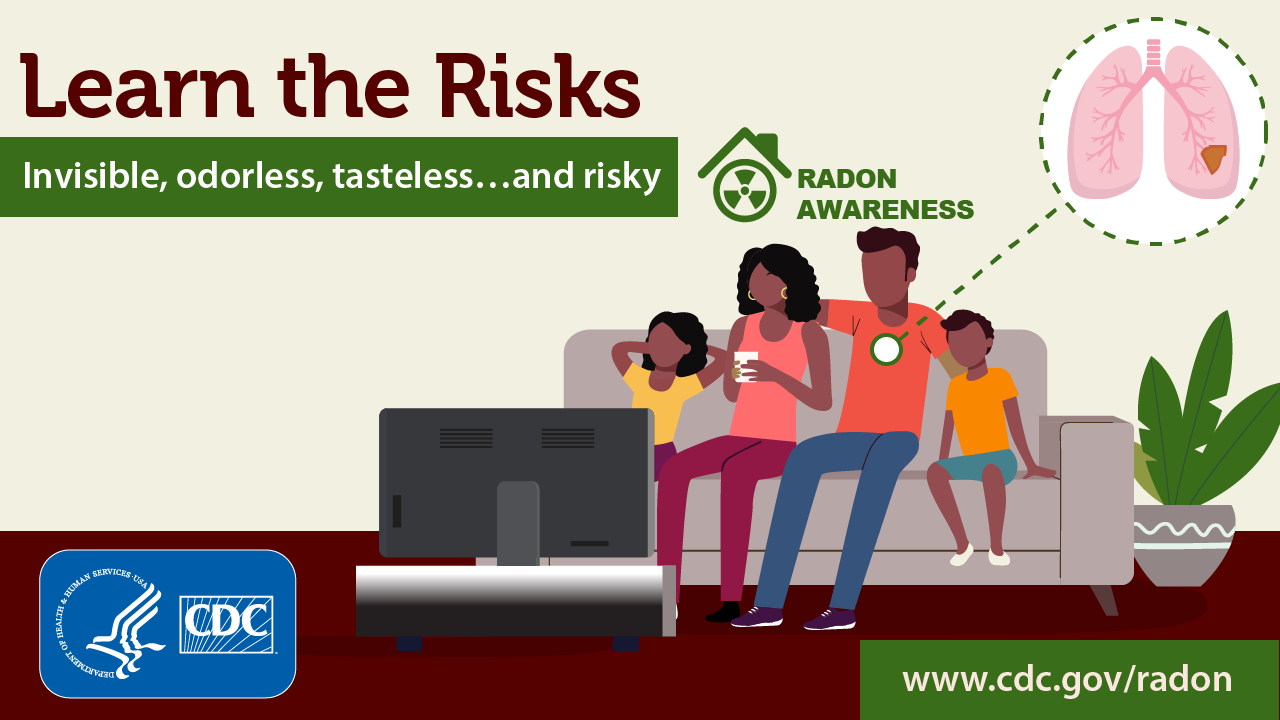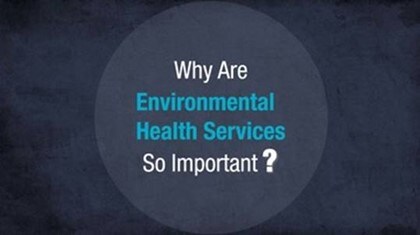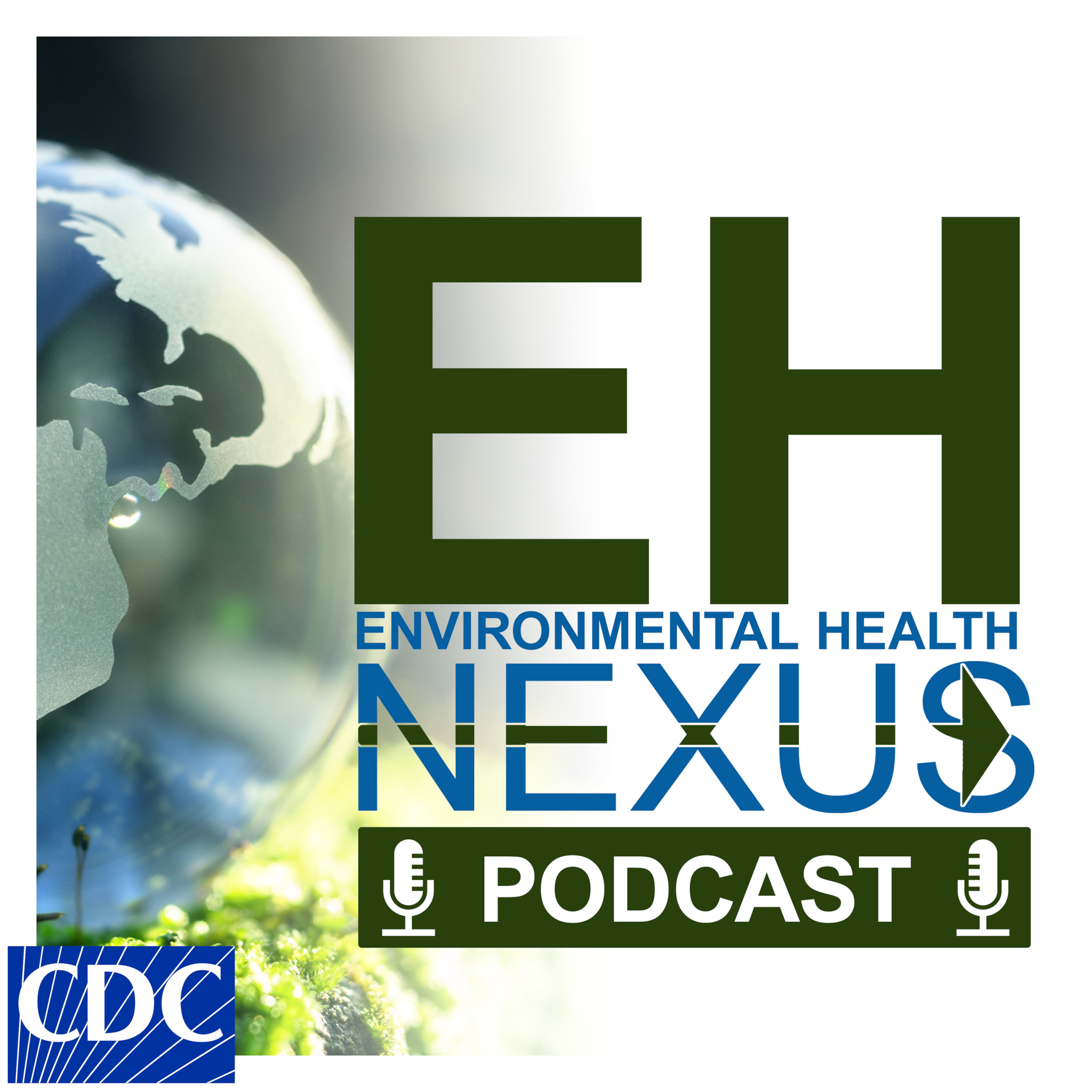CDC Environmental Health Nexus Newsletter
Healthy Environment, Healthy You
January 2023 | Volume 15

Centers for Disease Control and Prevention’s (CDC) Environmental Health Nexus (EH Nexus) shares environmental health messages with the public and gives special attention to environmental justice.
EH Nexus newsletters provide information about environmental health issues and offers information that promotes actions to help save lives. The newsletters communicate how to reduce harm from public health threats, including climate change, contaminated food and water, toxic environments, and inadequate systems and practices.
This issue covers the following topics:
If the newsletter was emailed directly to you, we thank you for joining our subscription distribution list. If you are not a subscriber, please click here, enter your email address, and click the subscribe button.
EH Nexus Webinar for Radon Awareness Week: National and State-Level Radon Risk Reduction Initiatives
EH Nexus will host their next webinar on radon to kick off CDC’s 2023 Radon Awareness Week, observed during January 23–27.
During this EH Nexus webinar, you will learn about radon, how it can impact your health, and what individuals, communities, and healthcare providers can do to prevent lung cancer from radon.
This EH Nexus webinar for CDC’s Radon Awareness Week, features two speakers representing national and state-level radon risk reduction initiatives. Katherine Pruitt, National Senior Director of Policy at the American Lung Association, and convenor of the National Radon Action Plan (NRAP) Leadership Council will present background information on the National Radon Action Plan Leadership Council and the evolution of the National Radon Action Plan (NRAP); an overview of NRAP 2021–2025’s goals, strategy, and progress.
Jessica Maloney, Indoor Air and Radon Program Manager for the Wisconsin Department of Health will discuss Wisconsin’s new radon testing and mitigation requirements for state-licensed childcare centers. She will also discuss Wisconsin tribes addressing radon reduction statewide—an overview of radon initiatives recently implemented among indigenous communities.

Katherine Pruitt, B.A.
National Senior Director for Policy
American Lung Association

Jessica Maloney, B.S.
Indoor Air and Radon Program Manager
Wisconsin Department of Health
This webinar will broadcast on Wednesday, January 25, from 1:00–2:00 p.m. ET via Zoom.
To register for this event, please visit Webinar Registration—Zoom (zoomgov.com) Closed captioning will be available.
Visit the EH Nexus website for more details.
CDC’s Radon Awareness Week, January 23–27
To close out the month of national and community radon action, CDC recognizes the last week of January as Radon Awareness Week, with a special focus each day on a public health theme. CDC’s 2023 Radon Awareness Week raises awareness about the combined risk of smoking and radon, shares information about state radon levels and resources, and informs and empowers homeowners, healthcare providers, and school building managers on steps they can take to reduce risks.
Visit CDC’s 2023 Radon Awareness Week webpage for images and messages to help spread, including through social media.
Sign up for the Radiation and Health Newsletter for daily updates and to stay informed about radon and other radiation topics throughout the year.
What is Radon?
Radon is an odorless and invisible radioactive gas naturally released from rocks, soil, and water. In outdoor environments, radon levels are very low and generally not considered harmful, but radon can enter homes and buildings in small cracks and holes and build up to higher levels. All outdoor and indoor air has some radon in it. Radon can build up in the air in any home or building, whether it has a basement, is sealed or drafty, or is new or old.
Lung Cancer From Radon Can Be Prevented
Over time, breathing in high levels of radon can cause lung cancer.
Radon is estimated to cause around 21,000 lung cancer deaths in the United States every year.
Radon is the second leading cause of lung cancer; 1 in 15 homes in the United States have high radon levels.
Testing Your Home for Radon
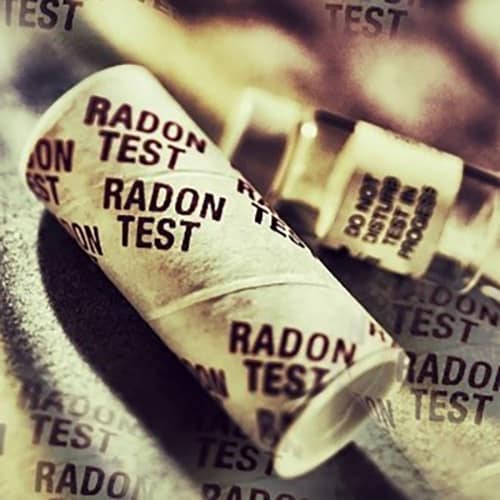
Testing your home is the only way to know if radon levels are high. You and your family could be at risk for lung cancer from radon.
When to Test Your Home
You Should Test Your Home’s Radon Levels
- If it’s never been tested or radon levels are unknown
- When preparing to buy or sell
- Before and after any renovations, especially after making any repairs to reduce radon levels
- Before making any lifestyle changes in the home that would cause someone to spend more time in the basement or lower level (like converting a basement to a bedroom)
Ways to Test Your Home
- Short-term kits measure radon for 2–90 days for quick results.
- Long-term kits measure radon in your home for over 90 days and are more likely to tell you your home’s year-round average level. The longer the test, the better the results will reflect your home and lifestyle.
CDC provides information on testing and reducing radon in your home. Contact your state radon control office for resources and help finding a qualified radon reduction contractor.
When You Should Take Action
Aiming for the lowest radon level you can achieve in your home will reduce your risk of harmful health effects, including lung cancer.
The Environmental Protection Agency (EPA) recommends contacting a qualified professional to install a radon reduction (also called radon mitigation) system if your home radon level is at or above 4 pCi/L of air. EPA also recommends taking action to reduce radon if your home radon level is from 2 pCi/L through 4 pCi/L. Contact your state radon office or one of EPA’s national radon proficiency programs to find a qualified professional to fix your home. Lowering high radon levels requires technical knowledge and special skills. Contractors who do not specialize in radon reduction could make the problem worse.
There are several proven methods to reduce radon in your home, but the one most used has a vent pipe system and fan, which pulls radon from beneath the house and vents it to the outside. This system, known as a soil depressurization system, does not require major changes to your home. Sealing foundation cracks and other openings makes this kind of system more effective and cost-efficient. Similar systems can also be installed in houses with crawl spaces. The right system depends on the design of your home and other factors like whether your home has a basement.

Learn About Personal Radon Stories
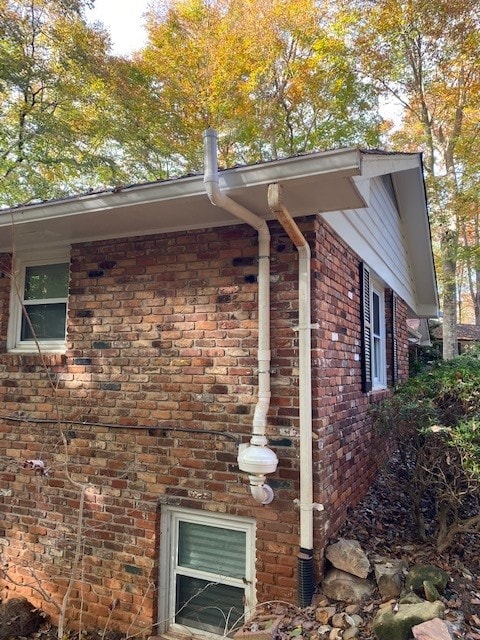
Carol is a CDC employee working in environmental health who recently tested her home for radon, read her story.
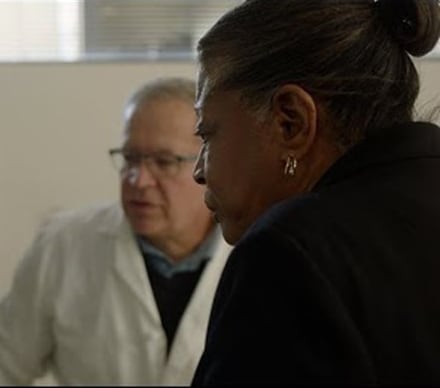

Katherine Pruitt,
National Senior Director of Policy
American Lung Association: Why Outreach about Radon is Important
VIDEO: Why Are Environmental Health Services So Important?
How do environmental health (EH) professionals work with epidemiology and laboratory professionals to protect public health? Learn how EH answers how and why a disease occurs, recommends actions to stop outbreaks and prevent future ones, and shields hosts from harmful agents through environmental controls [available in English and Spanish].
Learn How Restaurant Inspection Practices Are Linked with Foodborne Outbreaks!

New research found that posting health department restaurant inspection scores at restaurants and using letter grades for restaurant inspection results are linked with fewer foodborne outbreaks and could lead to safer restaurants. Read more in our plain language summary.
Information on these studies was presented during the September EH Nexus webinar, Set the Table: Improving Restaurant Food Safety Through Science and Practice. Miss the webinar? You can watch the replay! You can also explore more restaurant practices linked to outbreaks and other study findings in plain language, along with more food safety resources for environmental health professionals.
Updated Terminology
No safe level of lead in children’s blood has been identified. Therefore, CDC does not use the term “elevated blood lead levels” when recommending what actions to take based on a child’s blood lead level (BLL). For more information on CDC’s preferred terminology, refer to the new fact sheet, CDC’s Recommended Terminology When Discussing Children’s Blood Lead Levels [PDF – 343 KB].
NEW MATERIALS FROM CDC
Thank you for reading. Do not keep this great resource to yourself! Please share it with your colleagues and networks.
If you are not yet a subscriber, please click here, enter your email address, and click the subscribe button at the bottom of the webpage.

